- How to disable ACR on your TV (and stop companies from spying on you)
- I expected this cheap multitool to be a waste of money, but it's my new a toolbox essential
- Have The Last Word Against Ransomware with Immutable Backup
- Multi-channel Secure Communication
- Apple's bold idea for no-code apps built with Siri - hype or hope?
Reflections on the Journey to DevNet Expert
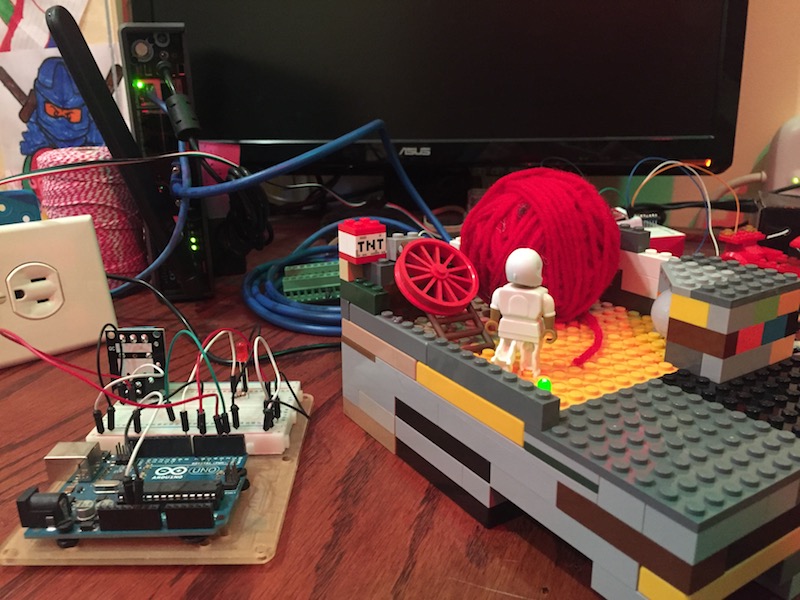
Picture this, if you will. It is December 2016 and I have just gone through security at the airport. I am explaining to the friendly (but confused) team why I have a bunch of electronics—a small router, wires, Lego, and a ball of yarn—in my carry-on. This conversation wasn’t a surprise to me. I fully expected to be pulled aside when my bag went through the X-ray machine. I’d prepared my explanation.
You see, I was heading to California for the last SEVT of the year where one of my presentations was aimed at explaining to a room full of Cisco engineers and solution architects how and why programmability was not only relevant to us, but how it can also be fun to learn and work with. I’d spent the last several weeks working on a demonstration I called “Giant Ball of String Meets Cisco IoT” that involved using a Cisco IoT router to monitor interest and foot traffic at one of the most popular roadside attractions in the US, the World’s Largest Ball of Twine.
My premise was that such a treasured attraction was ripe for some upgrades. Sites like these are spread across the United States and are favorite stops for families engaging in the great pastime of road tripping. Families pull over for bathroom and food breaks, stretch their legs, take some photos and then continue along. Wouldn’t it be great for the communities running these locations to have data on how many people visit each year? What days of the week and times of day are most popular? And for those who come at night, when to turn on lights to welcome them and ensure safety. Of course, it would be great. But these locations are often in the proverbial middle of nowhere. My demo focused on using the ability of Cisco IoT routers to support cellular data connectivity to communicate with “the cloud,” as well as serial interfaces to connect to the hardware and sensors, allowing communities to control lights and identify activity at the site.
And never being content with just describing something in slides, I actually built it. For anyone wanting to walk down memory lane with me, the code is available on GitHub. But enough about that, back to the scene with the security guard. In my bag are all the parts to this demo. A demo that I had just recently finished fully making work. A demo I was very much crossing my fingers would go off smoothly when I arrived in San Jose to deliver it to a room full of some of the toughest demo critics in the industry – system engineers, or Cisco SEs. (Spoiler: the demo went fantastically). Maybe it was a bit of holiday spirit in the air, but I was lucky. With a shake of the head and an odd smile, I was sent along to my flight.
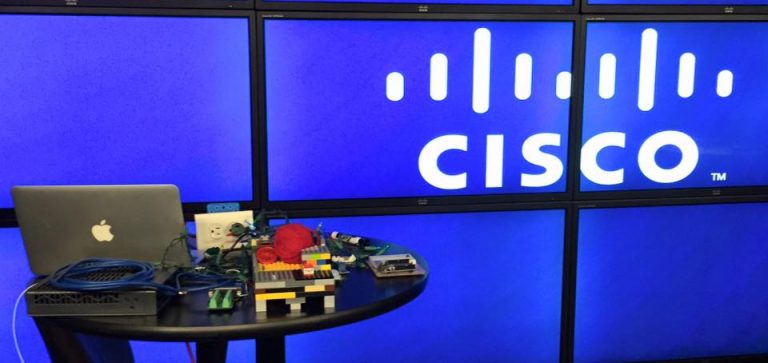
I share this story as it is just one of the many “roadside attractions” on my own Journey to DevNet Expert. And while my journey is far from over, with the launch of the DevNet Expert Lab Exam on May 2, 2022, I wanted to share a bit of my own journey with you all.
The Journey Begins
I joined Cisco as a systems engineer in 2010. I chose Cisco for many reasons, but a big one was my desire to focus on network engineering after being far more of a “jack of all trades” in IT up to that point. While I’d done my fair share of networking, I’d also done plenty of work on desktop support, Microsoft server administration, email administration and setup, Citrix work, database development, and malware removal. (Oh, so much malware removal work in the early 2000s. That could be its own “reflections post.”) My imagination was full of days spent configuring routers and switches, working on routing protocols and WAN design, VPN configurations, and oh so much racking, stacking, and cabling of gear. It was going to be GLORIOUS. And while there was plenty of that type of work, there were a lot of other aspects to being a Cisco SE as well. I generally enjoyed the job and did well.
But far sooner than I had expected, talk about cloud, software, and programmability started to creep up around us. In the early years of the 2010s, these discussions were isolated at the edges of most work we did. Only in pockets around Cisco and with our typical customers did they come up. Some of the SE leadership started to take notice and wanted to be prepared when concepts like “software defined networking” and “cloud” came up in discussions of general architecture or major projects. I was one of a handful of systems engineers offered the chance to take some training on topics like cloud-native (it might not have been called that yet) application development, cloud computing, infrastructure as code, Python, etc.
And looking at where my journey took me, you might be surprised by this next fact: If I’m honest, I wasn’t all that interested in the offer. I mean I had fairly recently joined Cisco to “do networking.” I had experimented and explored software development before. I have a master’s in information systems and after learning Java I NEVER wanted to be a “programmer.” However, I was still new at Cisco and was eager to learn and be valuable to my team and leadership (thanks Eric!). So, I said yes and I am so glad I did. It was one of those forks in the road that dramatically changed my path.
A few weeks after saying yes, I was off for two weeks of very focused and intense training to kickstart my knowledge on these topics. Along with maybe a dozen other systems engineers from around Cisco, I was put into a bootcamp of sorts. Today, there are lots of classes on topics like cloud, scripting, APIs, etc that are designed and aimed at network or infrastructure engineers. But at that time there weren’t. We went through training that was typically given to software developers within Cisco. I learned about concepts like message buses and queues, REST APIs, infrastructure as code, load balancers, and proxy servers (from the perspective of application developers), and some early details on containers. It was a future training trip with the program where I was first introduced to Python in one of the most accurately named classes I’ve ever taken, “Intensive Introduction to Python” taught by Raymond Hettinger.
It didn’t take long for my reluctance to go away. I fell in love with Python, and the way the development topics were taught reawakened a lot of the love I had when I was going through school. Much of what I learned in those early classes and work lead to another one of my favorite presentations and Cisco Live Sessions. “Micro-Service Applications for Infrastructure Engineers” came out of my early journeys and training in this area. It tells the story of another one of my over-the-top demos at an SE training session—the MyHero application. While the content is definitely a little dated today, there is a lot in there that is still quite valuable and relevant to engineers. If you haven’t seen it, take a watch. I earned at least five Distinguished Speaker awards for that session, so it must be pretty good.
Finding a New Home in DevNet
I eventually made a name for myself within the SE community at Cisco as one of the “cloud and programmability guys.” But around the time of the exciting trip through airport security that started this post, I made another of those fateful decisions. I left the Cisco SE organization and joined Cisco DevNet. The impetus for this decision was quite simply a desire to tackle what I had seen building for quite some time in the network engineering community. When I’d go and talk with engineers about automation and programmability, more often than not I’d find those engineers confused and a bit scared. All around them the message was “network engineering is dead.” That software or cloud developers were going to just take over their work. That their skills weren’t needed anymore. Discussions often focused simply on how they could figure out how to keep their networks running as cheaply and simply as possible. They didn’t want to be “noticed.”
This rhetoric broke my heart. I understood the fear and confusion, but I knew that there was an entire part of the story that wasn’t being told or heard. There was vast potential for these same topics to launch network engineers into a bright new future full of opportunities. What was needed was someone to tell the story of these opportunities, someone who could provide this perspective. Someone to talk about network automation and programmability from the perspective of these network engineers, and put the details into a context that resonated with the audience. Possibly tell a story and give a demo or two. I thought, what the heck – I can be that someone.
While at Cisco Live Europe in Berlin in 2015, I chatted with the then-leaders of DevNet about my idea and thoughts. At the time, DevNet had been around for a few years, and while network automation was an active topic, they agreed there was an opportunity to dig deeper into it. It took a little doing, but in December of 2016, I officially joined DevNet as a Network Automation Evangelist and became laser-focused on making network automation something network engineers would see as understandable, valuable, and even a bit of fun.
It turned out the timing was good, and I found an audience for this message. It really sunk in to me that we were on to something and making a difference at Cisco Live in Vegas in 2017 when I had the first session in the DevNet Zone for the day. The session was titled “How to be a Network Engineer in a Programmable Age” and at 2 minutes to go there was no one in the audience. But that was because the doors to the World of Solutions weren’t open yet. When the doors opened, I watched as a tidal wave of attendees poured into the World of Solutions and DevNet. That was to be expected. But what I didn’t expect was that a decent chunk of that wave was headed straight for me.
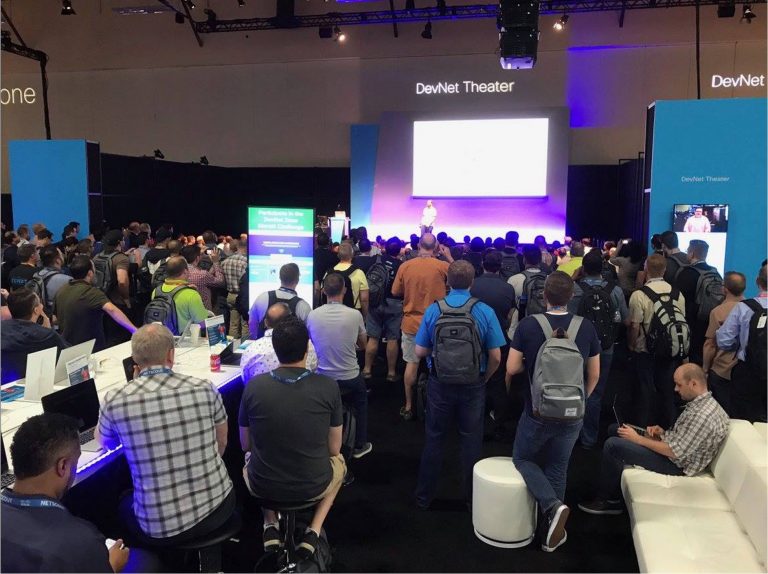
Looking out at the audience left me momentarily speechless. The idea that all these network engineers had gotten up early in Vegas to come listen to me tell my story gave me pause. But it was a good pause. It showed me that there truly was a hunger and desire in network engineers to find their place in this new area of network automation and programmability. That they were tired of being confused and afraid. And while I wasn’t sure I was exactly the right person to guide them, I would do so to the best of my ability.
Network Automation Gets “Official” with DevNet Certifications from Cisco
Even after joining DevNet and focusing on network automation and programmability full time, the topics were still in many ways isolated to the edges of the larger network engineering space. Sure, it was a popular topic and fun to play with, but it was seen as an “additional topic” that network engineers needed to learn. Kinda like multicast or MPLS, network engineers understood what it was and where it fits into the architectures they built, but it was a small portion of engineers who really focused on the topic. And from a certification perspective, automation topics were just one or two blueprint items on the CCNA, CCNP, and CCIE certification exam topic lists. The vast majority of the skills a certified engineer needed had nothing to do with automation.
But the times, they were a-changing.
As the week was ending at Cisco Live in Barcelona in January 2019, I was given a bit of news. Talks had begun about launching automation- and programmability-focused certifications by Learning and Certifications at Cisco. It was still in the early stages, and the details weren’t fully known yet, but it was going to happen. The public announcement was going to happen later that year at Cisco Live in San Diego. I was excited. This was big. Network automation was moving from being an interesting peripheral topic to something mature enough to begin building certifications. Engineers were starting to focus their careers on automation and organizations were eager to find and hire them.
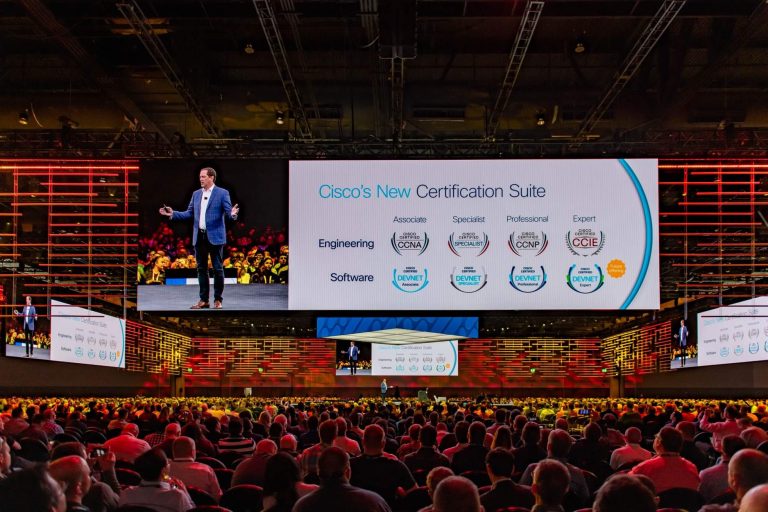
The time between January and June was very busy. A lot of details on the certification changes were worked out, and at San Diego, I got to share in the excitement of the automation community as it was announced at Cisco Live by Chuck Robbins.
But take a look at that picture above. See that little yellowish-orange star at the bottom right of the slide next to the badge for “DevNet Expert?” It says, “Future Offering.” The announcement in June 2019 about the DevNet Certifications set February 2020 as the date of release for the DevNet Associate, Professional, and Specialist certifications. However, from fairly early on in the planning of the new certifications, it was recognized that launching the Cisco DevNet Expert-level certification at the same time wasn’t going to be possible. And while many of us were eager to see the DevNet Expert become real, we knew taking an agile and iterative approach was best. So, we came back from Cisco Live after the announcement and continued the work that had been going on for months, focusing on building the certifications that would launch in February 2020.
Boy was it a lot of work. It took a massive amount of teamwork between hundreds of people from Learning and Certifications, DevNet, and external subject matter experts to build blueprints, courses, exams, training materials, etc. But it all came together. And starting in February 2020, the first DevNet Certified individuals joined the world. I remember the pride I felt sitting and taking my own exams to earn my DevNet Associate, DevNet Professional, and Data Center Automation Specialist certifications.

Bringing the DevNet Expert Certification to Life
Many of us expected to immediately begin work on DevNet Expert once the February 2020 release was passed. However, far more important things took focus as the world moved into 2020. Building a new certification was the last thing on my mind. Eventually, as the world adapted to the new normal as best we could and work began to resume, discussions on the DevNet Expert certification started up.
Creating any Cisco certification is a major endeavor, and building an expert-level certification adds a lot more to the expectations and requirements. Normally, a team of certification and education experts from Cisco Learning and Certifications would enlist the help of subject matter experts from within Cisco, our customers, partners, etc. to provide input into “what it means” to be a Cisco Certified DevNet Expert. This is a long process that involves many interviews, the creation of detailed descriptions and design documents, and eventually, the full blueprint of the exam topics for an exam. This step is often accomplished through in-person workshops and heated discussions. Those in-person workshops just weren’t going to be possible for the DevNet Expert, so we adapted and our amazing team of certification specialists successfully brought the subject matter experts together virtually. Together we accomplished the important preparation work of defining the DevNet Expert certification as something that fit the real-world experience of those engineers who were already acting as senior automation engineers out in the world.
After many heated discussions about what skills belonged on the blueprint, how we might event test those skills, and the exact wording we wanted to use, we had a blueprint ready to release and share with everyone eagerly awaiting it. In October 2021, Joe Clarke, one of my personal role models and a fellow SME on the DevNet Expert certification project, published his blog [Re-]Introducing the Cisco Certified DevNet Expert. This blog both reintroduced the DevNet Expert certification to the world and set the exam availability date of May 2, 2022. Now, we’d been working on the lab exam for the DevNet Expert for some time before October 2021, but there was a lot of work yet to do, and there is nothing quite like a deadline to motivate work. And it definitely motivated us.
By “us,” I am referring to the amazing team of engineers I had the pleasure of working with on building out the DevNet Expert Lab Exam. And because they all deserve direct recognition, I want to call them all out by name. Kurt Claes, Joe Clarke, Ramses Smeyers, Dmitry Figol, and Stuart Clark: Thanks for sharing this journey with me. It was a great one. And I’d also like to mention two other engineers who helped in the development of the exam as we were getting started. Josh Bronikowski and Julio Gomez: Thanks to you both as well for your help in shaping the exam and certification.
By the beginning of April 2022, we had the exam ready for a test drive—a beta-test drive, that is. On April 4, I took my first work trip in almost two and a half years and headed to the CCIE exam center in Richardson, Texas where we had a group of five candidates who had agreed to be the first to try out the exam and give us some feedback. Alongside other candidates taking CCIE exams, these DevNet Expert candidates took the exam while Joe and I proctored, watched, and took notes on everything that seemed problematic or confusing. Things that were intended to be challenging were kept, of course, but we left Richardson with fewer than four weeks to make the final tweaks and updates to the exam before its release on May 2, and the first candidates to try their hand at earning the latest Cisco Expert-level certification arrive.
Final Thoughts
That brings us to today. It’s been about four weeks since launch, and we’ve already had many candidates take the exam. Like every expert-level practical exam from Cisco, the Cisco Certified DevNet Expert lab exam is challenging. It requires deep technical knowledge and experience in the domain of network automation, as well as the mental discipline and resilience to focus for eight hours straight to complete the examination. However, I’ve had the chance to speak directly with several of the candidates who have taken the exam, and everyone has described the exam as fair, relevant to the real world, and something they plan to continue preparing for. As I expected all those years ago, network engineers are interested, eager, and more than capable to make network automation a core part of what it means to be a network engineer.
If you are preparing yourself for the DevNet Expert certification, or are interested in learning more about it, here are several excellent resources I recommend.
And if you’ll be at Cisco Live this June in Vegas, there are many sessions that relate to the DevNet Expert Certification. I’m delivering several of them 🙂
Thank you for joining me on this look back at my personal journey toward the DevNet Expert. And to close the loop on the wonderful roadside attraction of the World Largest Ball of Twine, my son and I finally made it there. It was one of about a hundred roadside attractions we visited on an epic road trip 🙂
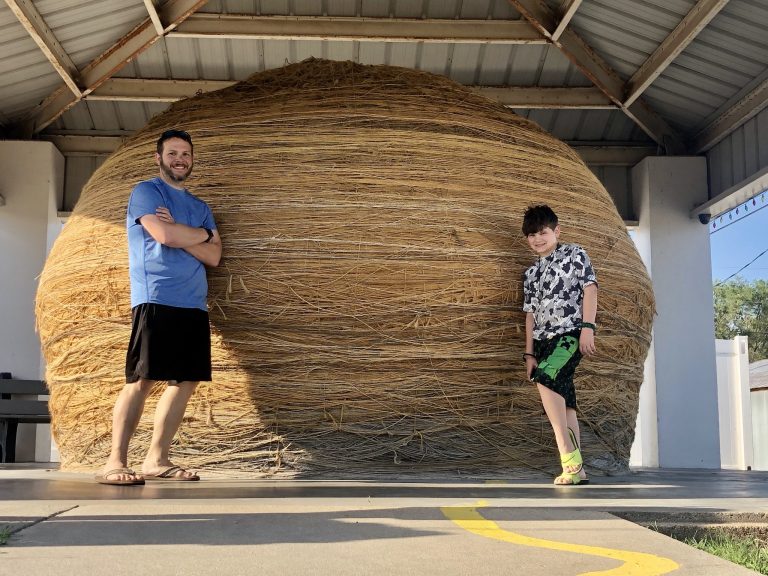
Follow Cisco Learning & Certifications
Twitter, Facebook, LinkedIn and Instagram.
Share:

